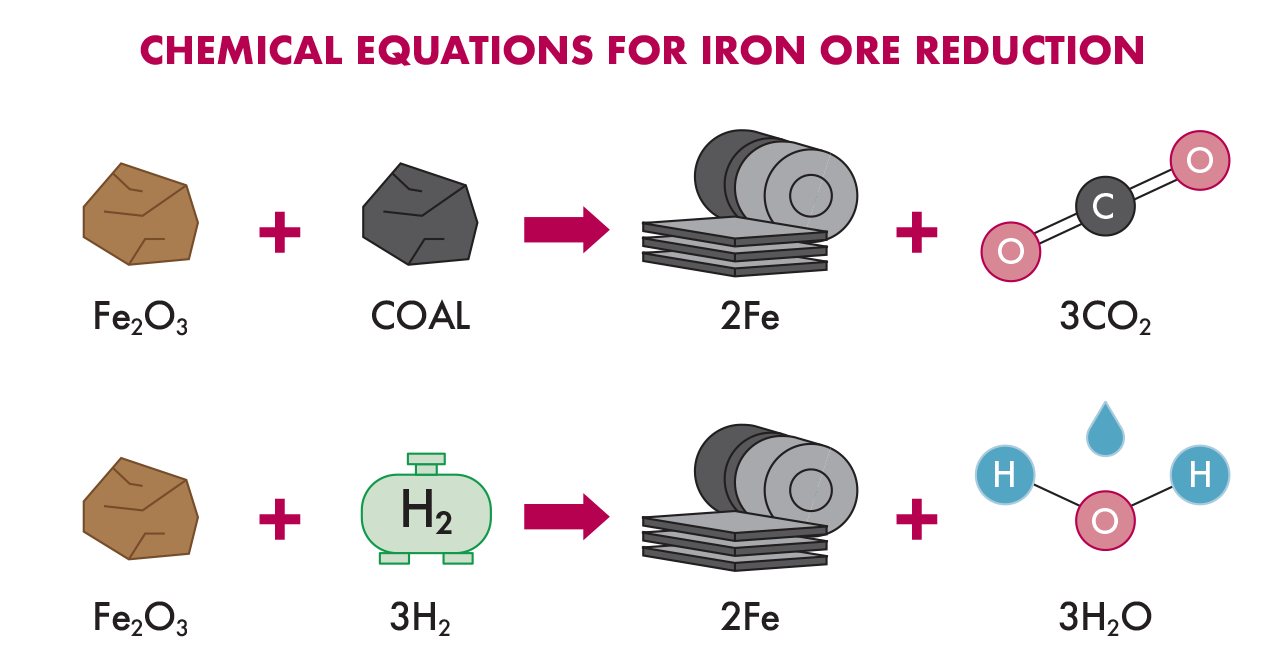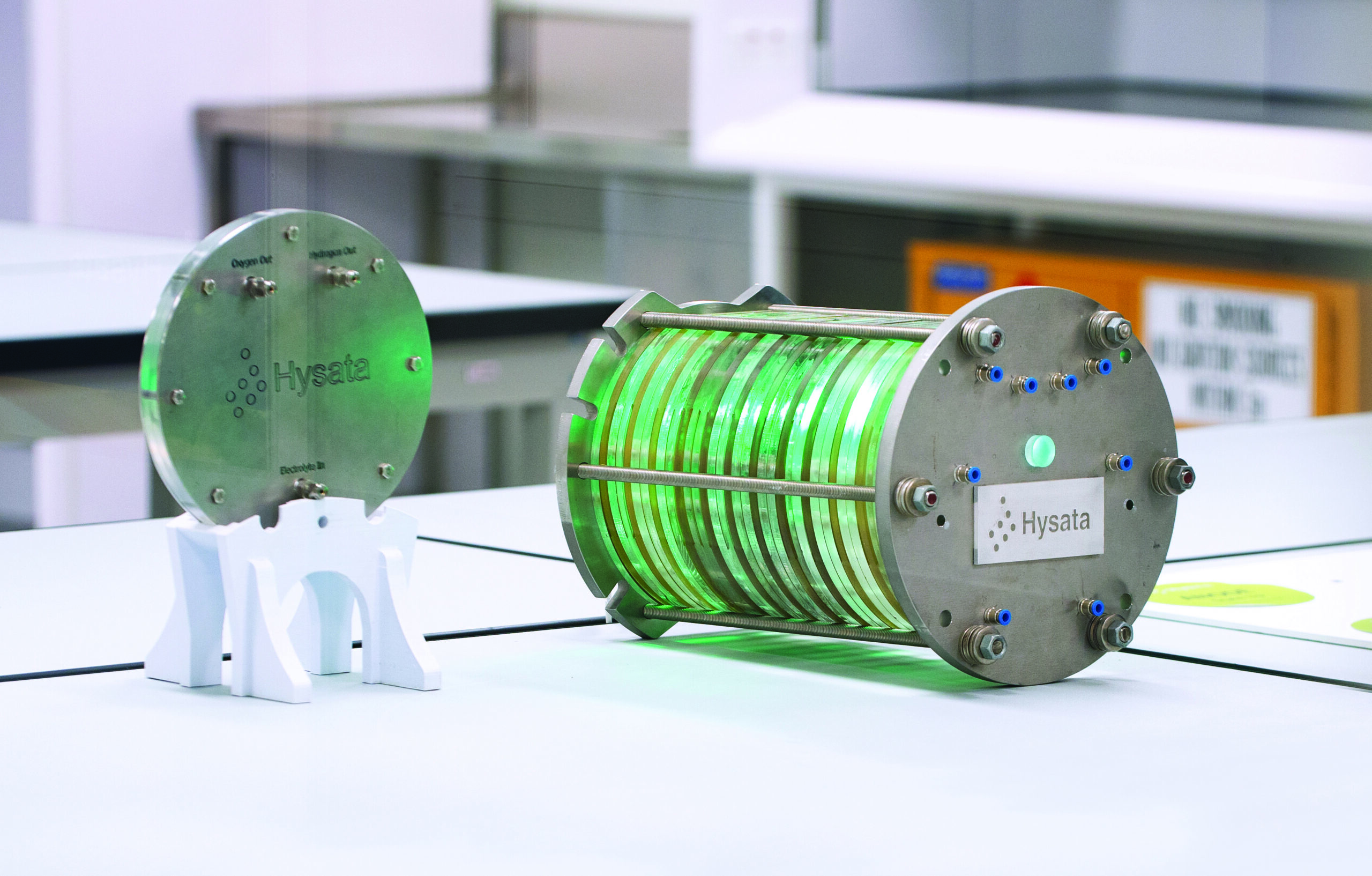Modern alchemy: turning hydrogen into eco-steel

Hysata’s energy-efficient electrolyser for hydrogen production paves the way for eco-friendly iron and ‘green’ steel manufacturing.
When gazing at a city skyline or cruising across bridges and overpasses, we often overlook the critical role of steel in framing our way of life. From high-rise and residential buildings to industrial facilities, railways and our favourite footy stadiums, steel forms the scaffolding of where we live, travel, work and play.
Steelmaking begins with the smelting iron ore (Fe2O3) to produce pure iron. In this process, coal strips oxygen from iron ore in a reduction reaction, leaving behind metallic iron. An electric arc furnace then purifies iron into raw steel. Unfortunately, the use of coal generates carbon dioxide (CO2). For every tonne of steel, 2 tonnes of CO2 are produced.
Steel production, in fact, accounts for 8% of global greenhouse gas emissions annually.

Every industry must reduce its carbon footprint to mitigate climate change. The decarbonisation of traditional steelmaking methods is crucial to significantly decrease CO2 emissions.
‘Green’ iron is created when hydrogen (H2) replaces coal in the reduction of iron ore.
Using H2 to create metallic iron decarbonises steelmaking because water is produced instead of CO2. The H2 needed for this eco-friendlier iron manufacturing process is produced by electrolysis, in which an electric current splits water into hydrogen and oxygen.

An electrolyser cell has two electrodes (one for hydrogen, one for oxygen) surrounded by an electrolyte and separated by a membrane. As current flows, H2 and O2 gases are produced on the surface of the electrodes, forming as bubbles that waste electricity. This is like blowing bubbles as children, which took energy and made our cheeks sore. The membrane prevents these gases from mixing back together but has high electrical resistance, further wasting electricity. Current electrolysers are complex, costly and only 75% efficient, with 80–90% of the cost of H2 production coming from the electricity bill.
To realise the goal of green iron, electrolysers that use less electricity and greatly lower H2 production costs are needed.
Hysata is a green energy company bringing down the cost of H2 production with its revolutionary breakthrough in electrolyser technology that solves the root causes of inefficiency.
Its Capillary Fed Electrolyser (CFE) employs a low-resistance, thin membrane (only 2x the thickness of a human hair) that wicks the electrolyte between the electrodes, producing H2 and O2 gases without making bubbles.
Hysata’s invention is the world’s most energy-efficient electrolyser. By combining a low-resistance membrane with bubble-free gas production, electrical resistance is significantly reduced. In CFE, 95% of the supplied electricity is converted to electrolysis. This efficiency gain pays off – Hysata’s system requires 20% less power to make H2.
The ANFF-Materials Node at the University of Wollongong has been an invaluable partner for Hysata in the development of the electrolyser cell, aiding in fabricating, testing and troubleshooting the electrolyser’s design.
Hysata’s H2-production platform is based on a CFE the size of a dinner plate that contains the separation membrane and supporting framework.
The cells can be stacked by the hundreds in arrays of steel pipes.

This smart, modular design makes manufacturing easy to automate and scale up.
Growth in Australia’s wind and solar energy infrastructure will increasingly power electrolysis systems, reducing fossil fuel dependence for H2 production.
Hysata has a clear path to deliver world-first electrolyser performance that produces the lowest cost green hydrogen.
Expanding production at its beachside manufacturing facility in Wollongong, Hysata will provide valuable Australian job opportunities in a sector that will change the world.
Decarbonising the steel industry is a formidable challenge. But with green energy pioneers like Hysata, supported by policies such as the Future Made in Australia, we will emerge as a global leader in the green manufacturing transformation.
Published 15 October 2024 in ANFF’s 2024 Casebook ‘ANFF NEXT‘
Posted 26 March 2025
